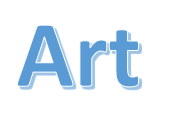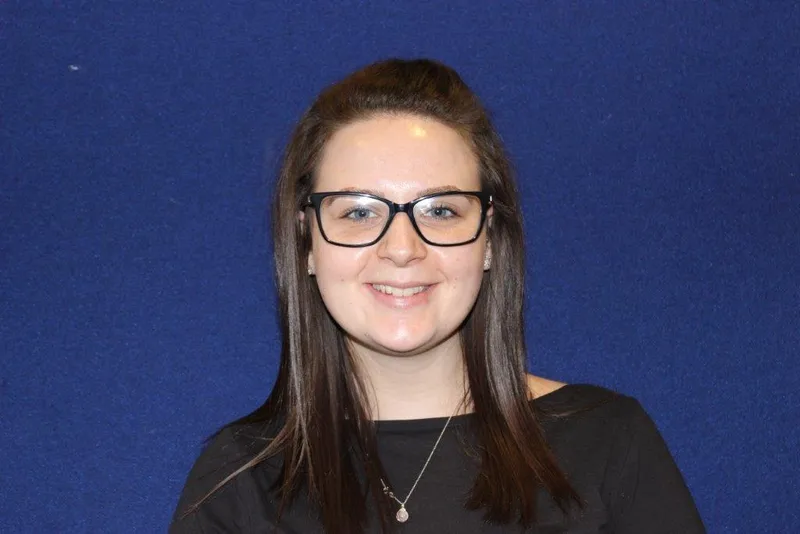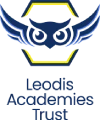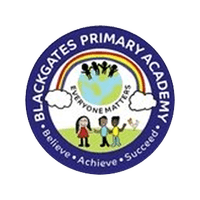
Lead: Georgina Gutteridge

Statement of Intent
Art, craft and design embody some of the highest forms of human creativity. Art and Design teaching at Blackgates Primary Academy delivers an engaging, inspiring curriculum that challenges pupils, equipping them with the knowledge and skills to experiment, invent and create their own works of art, craft and design. As pupil’s progress, they become able to think critically and develop a more rigorous understanding of art and design. They gain knowledge of how art and design both reflect and shape our history, and contribute to the culture, creativity and wealth of our nation.
The Art and Design curriculum begins in Early Years with children developing their skills in drawing and painting techniques. They learn the primary colours and how to mix colours together to create new ones. They also learn to draw in pencil, as their fine and gross motor skills develop. They create 3D models using a range of materials and begin to develop skills in collage to represent objects. Children can explore colour, thoughts and feelings, media and materials and the exploration of the differences in their own and others’ work.
In Key Stage 1, the Art and Design curriculum focuses upon providing opportunities for enriching pupils’ experience of art and design. Children explore colour and mood, tone, a range of media, pattern and texture and personal thoughts and feelings by exploring a range of artists through broader curriculum topics such as nature, animals, the human body and the coast. In the Autumn term, children in Year 1 build on their collage skills using natural materials they find in the local area. They begin to use clay and develop skills and techniques of moulding and shaping the clay. Year 1 pupils study the work of Stacey Moore are how she represented farm animals. In Year 2, children develop skills in printing, based on the designs such as those of William Morris. They develop their drawing skills using pencil to create self-portaits and further develop their skills in collage and drawing and painting by studing the work or Natalie Pascoe.
In Key Stage 2, children further develop their skills and learn new ways to represent art. They study the work of famous artisits such as Andy Warhol, the shadowologist Vincent Bal (to link to Year 3 Science topic about light), African artists, architects, sculptures and designers to influence and inspire their own pieces of art and design. The famous people studied and the skills children develop are linked to their topics. For example, in our topic ‘What makes our world wonderous?’, Year 3 study Egyptian tomb paintings and replicate their style as they learn about the pyramids. Year 4 look at the design of the Roman Coliseum and Roman mosaics when they find out why the coliseum is one of the wonders of the world.
Throughout Key Stage2, children develop and practise skills using a variety of media such as: weaving, using Modroc, papier mache, oil pastel, watercolour paint and clay. The development of art techniques like pencil drawing, painting and 3D art continues in KS2 and builds on knowledge and skills children have previously developed in KS1, whilst they learn new skills such as photography. Pupils also study great architecture and designers such as Sir John Ive, the Senior Vice President of Apple.
The art and design curriculum provides the opportunity for pupils to be expressive and creative in their work and develop an appreciation and love of art.

Art in the Early Years.
Our children in the Early Years Foundation Stage love Art and Design. They are always working in different ways to show their creativity and make masterpieces to decorate their classroom and share with their families. They use a range of different equipment and materials and these are accessible throughout the day in their provision areas. The teachers also deliver focused activities where children are shown how to use materials and have a practise themselves. Take a look at their photos of them at work.
They have made lovely collages, paintings and drawings. They are also really imaginative when it comes to using different items to practise painting with!
Year 1 Clay Faces
In Autumn 2, the children in Year 1 took a selfie of themselves to help support them identify the features of their own faces to create a clay face. They practised using malleable materials such as playdough and clay to develop their skills to roll, knead and pinch it to create different shapes and apply varied techniques. They then used air drying clay to create their final pieces of art work to make a face that looks just like them.
Year 2 William Morris Printings.
The children in Year 2 have started exploring the work of William Morris and are working to create their own piece of art work using printing. The children have practised mixing colours in their sketchbooks to use in their design and worked to sketch some ideas inspired by William Morris for their own wallpaper printing. They then created their stamp using cardboard and string to then paint and print onto sheets of wallpaper.
Year 2 - Great Wall of China Clay
In Year 2, the children have been developing their skills in their clay work through their study of the Great Wall of China. They have learned about how the wall was made and the materials that were used to create this Wonder of the World. They then applied this knowledge to create their own sketches of the wall and used clay tools to imprint brickwork details onto their own clay interpretation of this wall. They created individual parts and used joining techniques to attach them together.
Year 4 Roman Mosaics
In Year 4, the children have studied the architecture of Roman buildings and learned about the history of mosaic art. The children practiced using skills such as tessellation and investigated Roman art using magnifying glasses to see the details clearly and then created mosaics using paper and real glass tiles to create their designs that could be used to decorate a Roman building.
Year 4 Photography Unit
During Autumn 1 in Year 4, the children have been learning about creating perspective and working on their angles when taking photos using a digital cameras. They have explored choosing a subject of their photo and practised with the zoom features to show perspective.
Take a look at the photos the children created.








Year 5 Barbara Hepworth Sculptures
In Autumn 1, the children in Year 5 have been learning about the artist, Barbara Hepworth. Within this topic, the children have learned about the techniques that Hepworth used, such as negative space and multiple forms, and identified these in her sculptures when visiting The Hepworth in Wakefield. The children were inspired by student artists in the gallery and joined them with sketching their favourite pieces of work. They used their knowledge of sketching 3D shapes and shading to add detail to their sketches too.
The children then used this knowledge to design their own sculptures that are inspired by the Yorkshire countryside and have used different materials to create them.
Take a look at our trip to the gallery and our work below:










Year 5 Mod Roc Hepworth Sculptures
After making our soap sculptures, we designed a second sculpture using more than one form. We used our artistic techniques to create negative space, curved edges and created them using newspaper and mod-roc to cover them. We then painted them and have put them on display.
Year 5 Clay Coil Greek Pots
During our Ancient Greek topic, the children in Year 5 have been learning about Greek pottery and have designed and made their own coil pot using clay. The children have used different moulding techniques to manipulate clay to create coils and included a handle so that the pot could be used. The children worked together to carefully construct their pots and used clay slip and scoring to ensure that the coils were attached accurately to create their final vases. They then worked to mix paints to create a colour that reflected the brown clay the Greeks used for their vases.
Year 6 Monarchy Portraits
Year 6 have been analysing photos of paintings of monarchs from the past. They have learned about the different symbols that were used in the paintings and how they represented wealth and power.
The children then practised making different shading effects using sketching pencils which they then used in their final portraits of their own monarchs.
The children copied photos of themselves and practised sketching with different sketching pencils to create different shades and shadows too.
Year 6 Recyclable Collages
In Year 6, the children have completed a project in the Autumn term to investigate recyclable collages based on the work of Jason Mecier. He is an artist that creates art work based on images of celebrities and makes them using recyclable items. The children in Year 6 have been planning their ideas by exploring who their favourite celebrities are and thinking about the types of materials they will use to create the colours and shapes of them in their own collages. They then chose materials appropriately to create the images. Can you work out which celebrities they've created?







